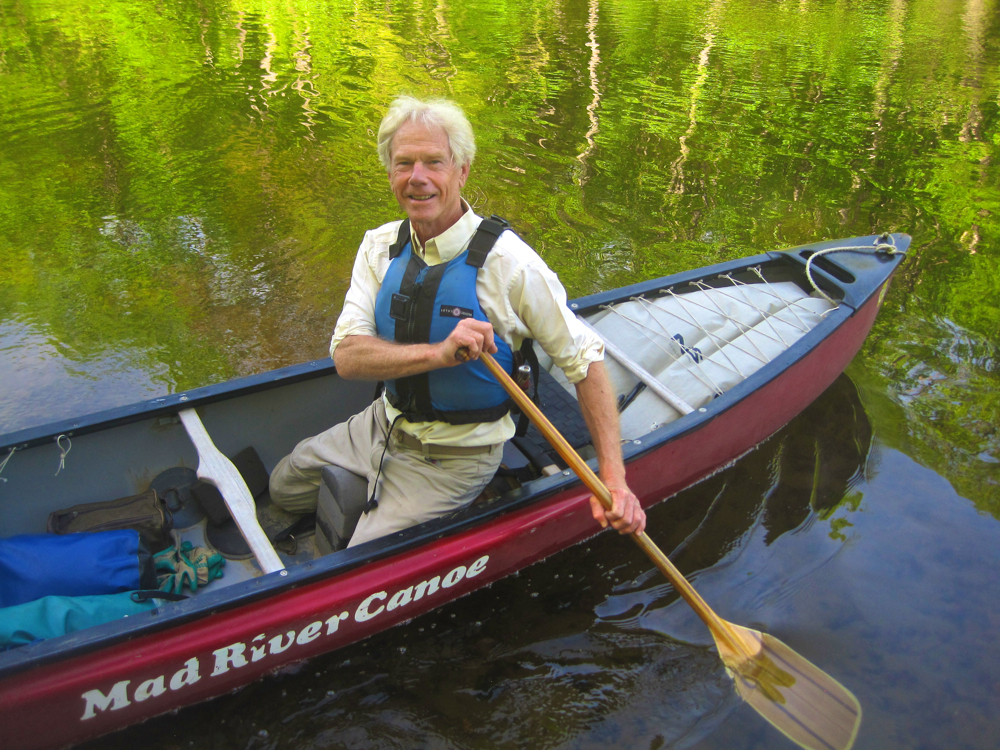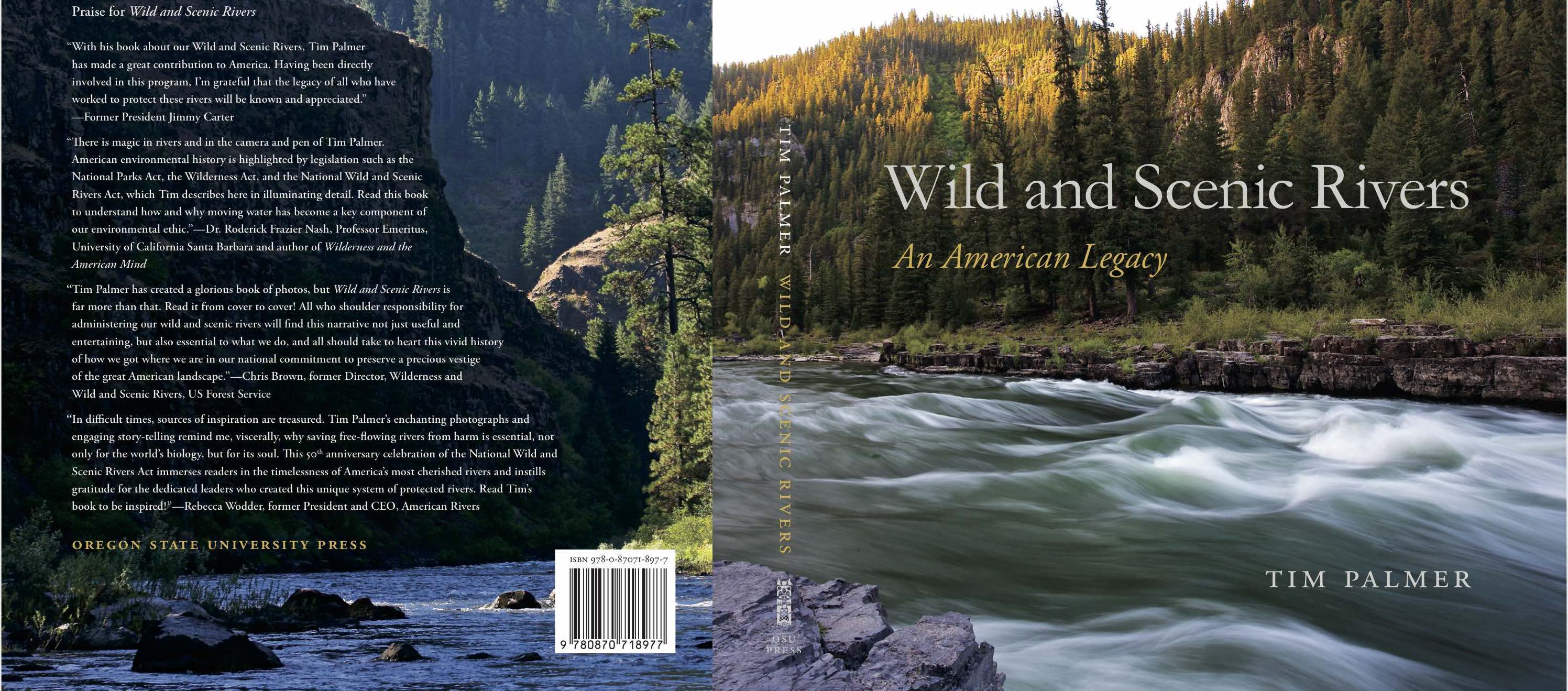Tim Palmer, author of Wild and Scenic Rivers: An American Legacy, might have one of the coolest jobs ever. Combining his passions for photography, storytelling, adventure, conservation, and natural spaces, Tim writes masterpieces about rivers, the American landscape, and adventure travel. His most recent book, Wild and Scenic Rivers: An American Legacy, celebrates the 50th anniversary of the National Wild and Scenic Rivers Act of 1968. He gives us a taste of the wild adventure he embarked on while crafting the story of this American legacy.
________________________
 If I can tell stories that touch the important and the timely, I'm a happy man with a purpose in life. And let me take photographs to show natural beauty with its irreplaceable value, and I'm thrilled in a visceral and soulful way that goes immeasurably beyond the simple image in a digital file on my computer. I like to ignore the sage old writing instructor's axiom—"Show, don't tell"—by both showing and telling through the two media I love: photography and narrative.
If I can tell stories that touch the important and the timely, I'm a happy man with a purpose in life. And let me take photographs to show natural beauty with its irreplaceable value, and I'm thrilled in a visceral and soulful way that goes immeasurably beyond the simple image in a digital file on my computer. I like to ignore the sage old writing instructor's axiom—"Show, don't tell"—by both showing and telling through the two media I love: photography and narrative.
I got to do both, plus paddle on rivers to boot, while creating my new Oregon State University Press book, Wild and Scenic Rivers: An American Legacy. Let me tell you: putting this volume of text and 160 color photos together with the OSU Press staff was a total blast.
For those who don't know (no worries; this group includes most Americans), the National Wild and Scenic Rivers system is the nation's, and the world's, premier means of protecting the values of natural, free-flowing rivers. The full story of this landmark conservation program had never been told, and the spectacular beauty of these natural rivers had never before been illustrated in any remotely comprehensive way.
Creating a book that's half story, half portfolio, I was determined to do justice to both with immersion in a vital and photogenic topic that has held my passion for all my adult life—that's a bit of a side-story that you can also find in the book.
Wild and Scenic Rivers offers a thoughtful retrospective and also a view to the future—together a timely endeavor because the fiftieth anniversary of this major but little known national conservation program comes just around the corner in 2018. The Press and I agreed that it was time to do both literary and artistic justice to this remarkable public initiative—and to these exquisite rivers along with the dedicated people who have worked to protect them.
Over the past half-century the system has grown from 12 to 300 major rivers and tributaries. Designation by Congress—something like a National Park only far lower key—bans dams and other harmful actions falling under the purview of the federal government. It also sets the stage for stewardship ranging from local land use controls to open space preservation to nuts-and-bolts management of recreation use and facilities.
Without spilling the beans, let me tell you about one of the stories I elaborate on in the book. Stewart Udall had served as perhaps the most distinguished Secretary of the Interior ever, and years later, in 1983, we met in an unlikely coffee shop near the University of Pittsburgh, where the former secretary was in "retirement" building a case for Navajo Indians aggrieved by radioactive waste and the Atomic Energy Commission. "As a Congressman in the 1950s, I was pro-dam. I instinctively identified my values more with the Sierra Club than with dam building, except that I was from Arizona, and you couldn't go to Congress from there and be against dams." The great statesman proceeded to tell me the whole story of his remarkable transformation.
With help from citizen conservationists and enlightened professionals serving under him, and with the heady rush of earthly elements whenever one kicks a boat off from shore and enters the seductive flow of a wild rushing river, Udall came to embrace the reality and the complexity of holding two opposite views at once – that some rivers should be dammed and some should be protected. As Secretary of the Interior he recognized that our treatment of rivers had been grossly unbalanced. He grew to eagerly support protection of the finest remaining undammed streams, and to battle against the mindset—and even some of the individuals—that he had grown up with as an Arizonan.
I was fortunate to interview Udall and most of the other principal players in the creation of the Wild and Scenic Rivers system back when that was still possible, three decades ago. And for my new book, I also talked with key people today who are no less dedicated to sustaining and enhancing this intriguing program of river protection, now and into the future. They, as well as the rivers themselves, give me hope.
 Let me also tell you about the adventure of capturing one of the photos—in fact, the cover. The Snake River flowing through Grand Teton National Park is one of the scenic icons of America, and farther downstream it rushes with greater speed and urgency through Alpine Canyon—one of the West's great paddling hotspots with big-volume whitewater. I've been exhilarated by it, many times, in my canoe. But the river there is challenging to photograph because its steep trench runs east-west, and so low angles of warm sunny glow have little chance of penetrating the forested slopes, the lush green shores, the palate of eroded bedrock, and the bubbly froth of rapids. Visiting and living nearby for some years, I had failed to get the great photo that this inviting place deserved. But then one day when the summer sun rose a bit farther north, when dawn broke blue and clear, and when I scrambled down to the shore at exactly the right spot, and at exactly the right moment, I found the river rushing with speed and grace, the light glowing in the forest above, and the time precisely perfect for a photo that revealed it all. What a gift!
Let me also tell you about the adventure of capturing one of the photos—in fact, the cover. The Snake River flowing through Grand Teton National Park is one of the scenic icons of America, and farther downstream it rushes with greater speed and urgency through Alpine Canyon—one of the West's great paddling hotspots with big-volume whitewater. I've been exhilarated by it, many times, in my canoe. But the river there is challenging to photograph because its steep trench runs east-west, and so low angles of warm sunny glow have little chance of penetrating the forested slopes, the lush green shores, the palate of eroded bedrock, and the bubbly froth of rapids. Visiting and living nearby for some years, I had failed to get the great photo that this inviting place deserved. But then one day when the summer sun rose a bit farther north, when dawn broke blue and clear, and when I scrambled down to the shore at exactly the right spot, and at exactly the right moment, I found the river rushing with speed and grace, the light glowing in the forest above, and the time precisely perfect for a photo that revealed it all. What a gift!
So it went on rivers across the nation, and also in libraries, offices, and people's homes as I interviewed, researched, and photographed. It was all fun, and now it's all an honor to bring this work into the world and celebrate our nation's magnificent estate of National Wild and Scenic Rivers. I hope you enjoy the book.
